As part of converting the halogen desk lamp to LEDs, I replaced the hulking iron transformer with a flatter counterweight:
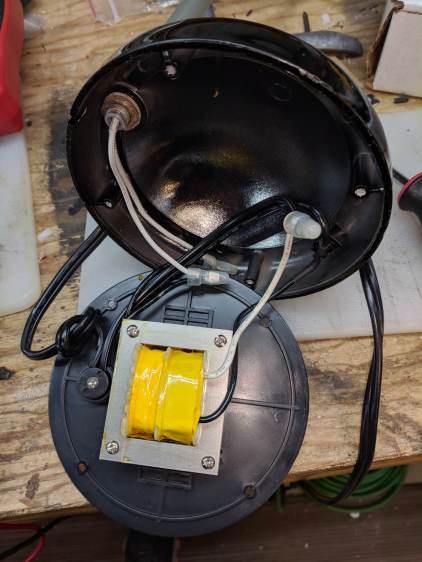
Under normal circumstances, you’d use something like steel or lead sheets, but Tiny Bandsaw™ can’t cut any appreciable thickness of steel and I gave away my entire lead stockpile, so I sawed disks from a pile of non-stick pancake griddles and drilled suitable mounting holes:
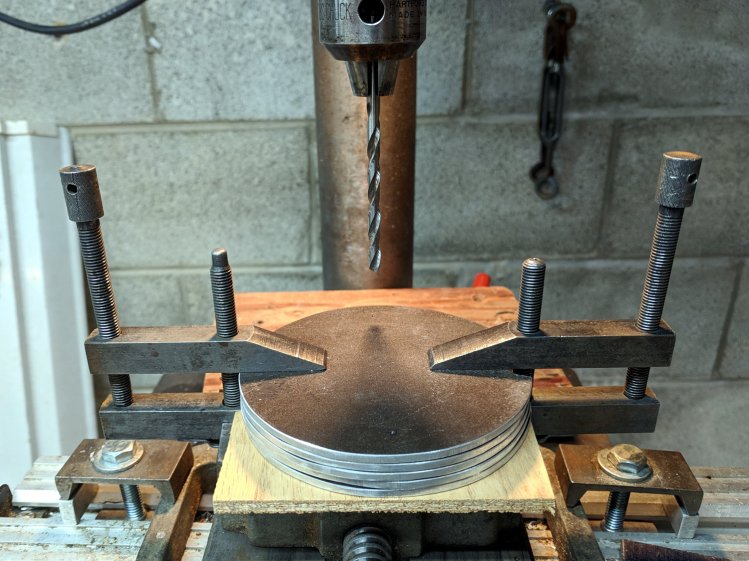
Another disk (from a formal aluminum sheet!) goes into the lamp head, with a trio of 3W COB LEDs epoxied in place:
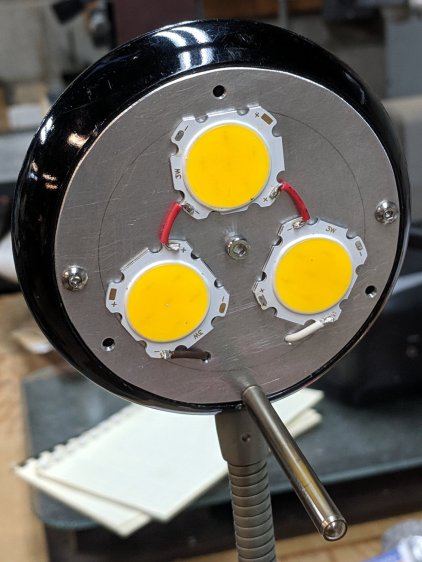
The other side of the disk sports a heatsink harvested from a PC, also epoxied in place:
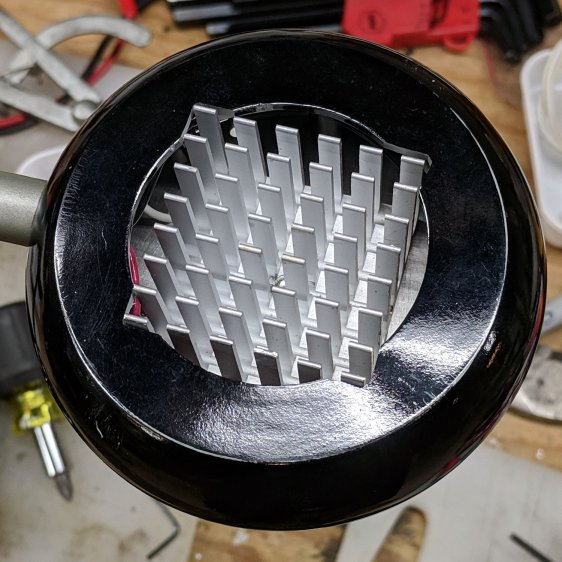
Realizing the head required only a little filing to accommodate the heatsink sealed both their fates.
A test firing showed the heatsink needed more airflow, which didn’t come as much of a surprise, so I milled slots in the lamp head:
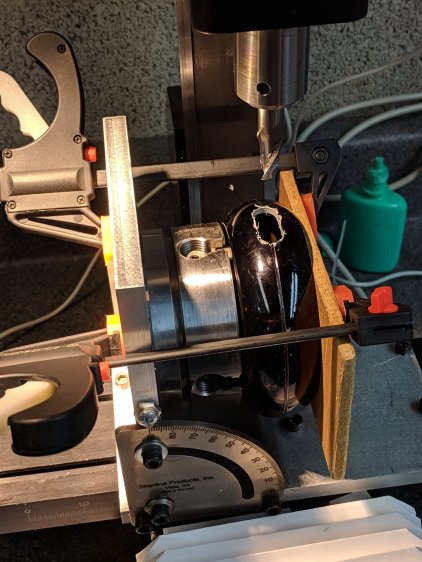
Deburring the holes, blackening the sides with a Sharpie, and tucking a bit of black window screen behind the opening made the vents look entirely professional.
The small dome in the base originally cleared the transformer and now holds the entire 10 W LED driver, along with all the wiring, atop the counterweight sheets:

A cork pad covers the base for a bit of non-skid action:
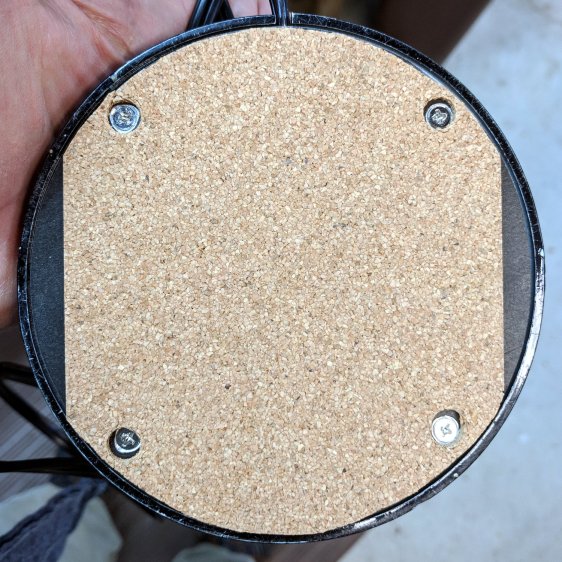
I couldn’t convince myself filling in those sectors would improve anything, so I didn’t.
And then It Just Worked:

All without a trace of solid modeling or G-Code …

I actually tried almost the same thing a while ago, but I decided that even just two 3W emitters were running too hot – even undervolted to something like 9.5V. Heatsink was old CPU unit, maybe 60x60x45mm with chopped off corners to fit inside the heavily perforated lamp cone.
How hot are you running?
It’s on the uncomfortable side of warm, with the LEDs 60 °C above ambient, but there’s no easy way to grab them, the plastic case runs barely 10 °C over ambient, and the heatsink is well recessed.
Even I’m not worried!
Running 60C above ambient means they might not last very long. I needed it for a non-technical person and also had a very strong desire that it never comes back to my shop :)
Apparently new LED TVs suffer from a same problem. My friend that makes a living servicing electronics says they run the backlight hard enough that emitters mostly fail open after about 5 years. This took me by surprise – I assumed LED backlights were running cool and the failure mode would be low brightness after many years.
An 18 W / 1 A industrial-strength emitter followed me home from Squidwrench yesterday, so I’ll eventually rehabilitate another desk light. It’s such a concentrated source I must mount it shining into the reflector, rather than directly toward the desk, to prevent harsh shadows.
So many projects! [grin]